If you want to know about the climate specific design principles or passive cooling or sustainable site planning, please click the link.
Passive techniques can be broadly classified into several categories based on the type of technology or method used.
The Passive techniques has been classified under the following.
- Passive Cooling
- Passive Heating
- Passive Daylighting
Solar passive design might not help solve 100% of the problem, but it will certainly reduce the demand for energy consumption.
1) Passive cooling
- Passive cooling is a building design approach that focuses on heat gain control and heat dissipation in a building in order to improve the indoor thermal comfort with low or no energy consumption.
This approach works either:
i) By preventing heat from entering the interior (heat gain prevention) or,
ii) By removing heat from the building (natural cooling).
Passive cooling systems
- These systems transfer heat from the building to the natural sinks, such as the air, water, earth or outer space.
- Implementation of these systems in buildings reduces the cooling loads and the energy required for cooling purposes.
Passive cooling

The various types of natural cooling systems are as under.
- Nocturnal ventilated cooling
- Stack Ventilation
- Solar Chimney
- Earth Tubes
- Wind Tower/ Wind Catchers
- Passive Downdraught Cooling
i) Nocturnal ventilated cooling

- Night flushing (also known as night ventilation, night cooling, night purging, or nocturnal convective cooling) is a passive or semi-passive cooling strategy that requires increased air movement at night to cool the structural elements of a building.
Concept
- In this process the thermal mass cools during the night which is heated during the entire daytime.
- The process of heat absorption is more efficient during the day.
ii) Stack ventilation
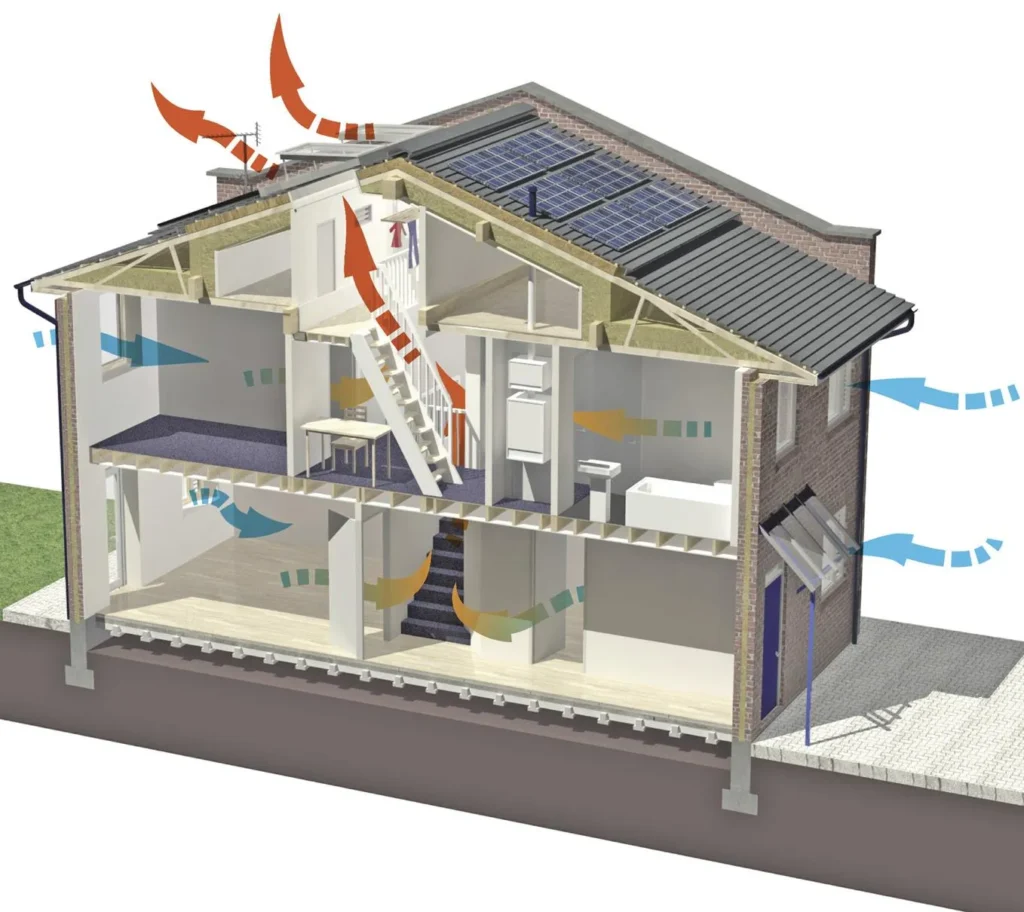
- Stack effect or chimney effect is the movement of air into and out of buildings, chimneys, flue-gas stacks, or other containers, resulting from air buoyancy.
Concept
- It is based on the principal of buoyant force.
- Buoyancy occurs due to a difference in indoor-to-outdoor air density resulting from temperature and moisture differences.
- The result is either a positive or negative buoyancy force.
- The greater the thermal difference and the height of the structure, the greater the buoyancy force, and thus the stack effect.
iii) Solar chimney
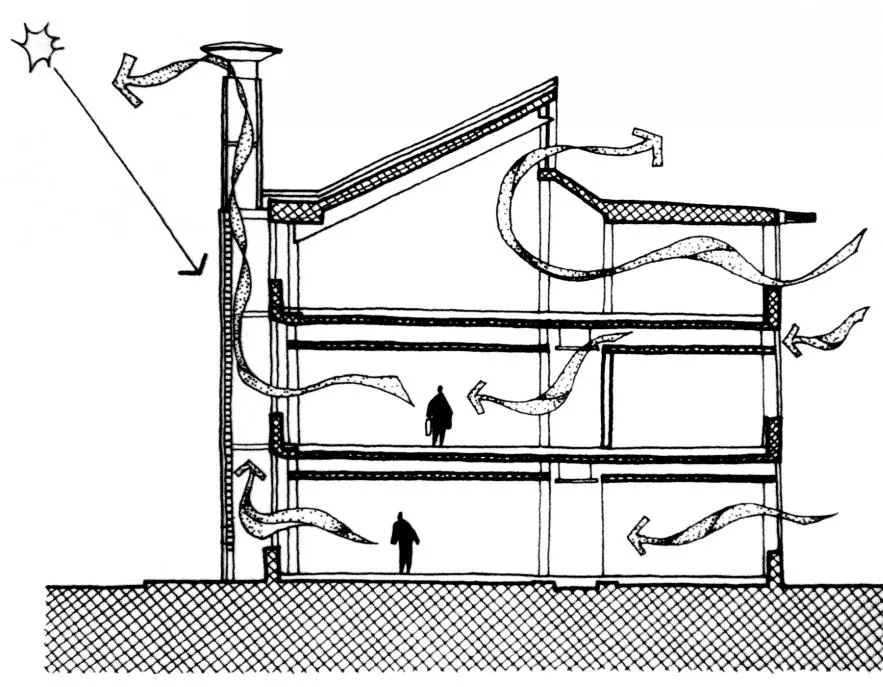
- A solar chimney—often referred to as a thermal chimney—is a way of improving the natural ventilation of buildings by using convection of air heated by passive solar energy.
- In this the external wall is glazed or painted in black to increase the absorption of heat inside.
iv) Earth tubes

- Earth Tubes are a passive technology that enable the transfer of ground source energy to heat or cool ventilation air.
- They are standard concrete tubes that run underground and precondition the temperature of incoming air before it enters the building.
- They reduce the energy required to heat or cool the building.
v) Wind towers

- Wind Tower is the process of passive cooling aids natural and comfortable ventilation.
- It captures the natural breeze and directs it inside the building. The inlet is oriented towards the prevailing breezes.
- The air may or may not be cool, but the circulation creates a comfortable condition.
vi) Passive downdraught cooling
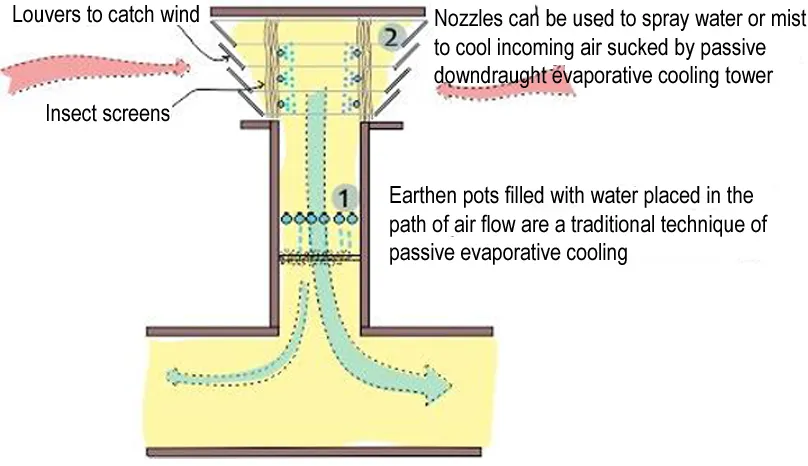
- Passive Downdraught Evaporative Cooling (PDEC) It involves the creation of a cold downdraught of air by evaporating water within an airstream.
- It involves the creation of the cool downdraught of air by evaporating water within an airstream.
Concept
- It works on the principle of evaporative cooling.
2) Passive heating
- Passive cooling is a building design approach that focuses on promoting heat gain and heat absorption in a building in order to improve the indoor thermal comfort with low or no energy consumption.
This approach works either:
i) By letting the heat from the sun in the interior, or
ii) By storing the heat gain and preventing the dissipation of heat.
Passive heating systems
- These systems are the ones that absorbs the heat coming from the sun during the day and dissipates it in the interiors to have a comfortable living space.
- Implementation of these systems in buildings reduces the heating loads and the energy required for heating purposes.
Passive heating

These are classified under the following.
- Direct Heat Gain
- Isolated Heat Gain
- Indirect Heat Gain
i) Direct heat gain
Orientation of building

- Most buildings in cold climate would have their longer facade towards the North in Southern Hemisphere and vice Versa.
Placements of openings
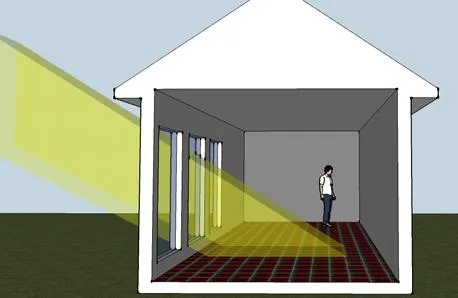
- Heat Gain is through glass to warm up the interiors of the living space.
Trombe wall
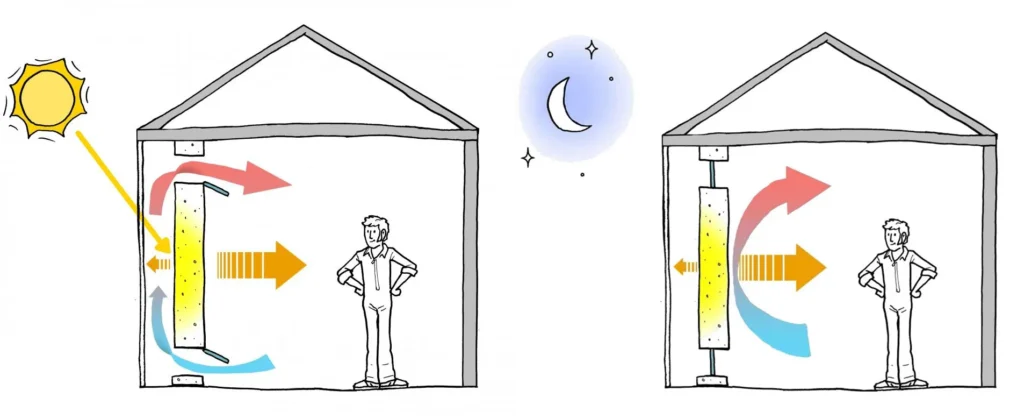
- It consists of a dark colored wall of high thermal mass facing the sun, with glazing spaced in front to leave a small air space.
- The glazing traps solar radiation like a small green house.
Water wall
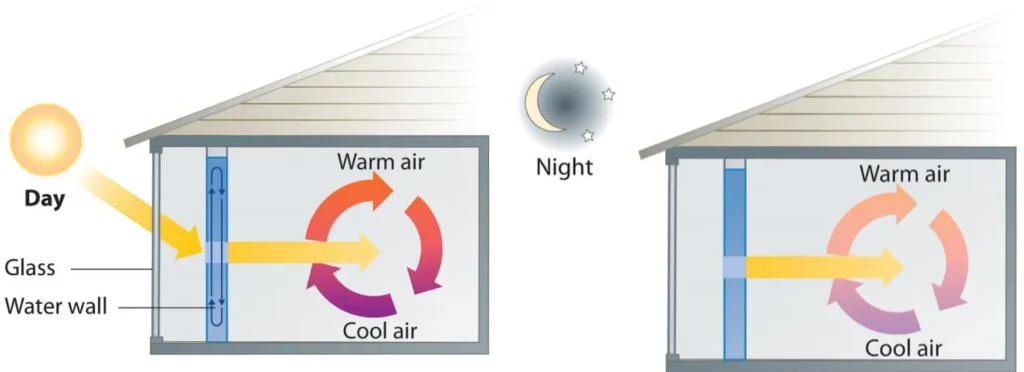
- In this, instead of using masonry, water can be used as the thermal mass.
- Heat is transferred through water wall is much quicker than a masonry wall.
Thermal mass wall
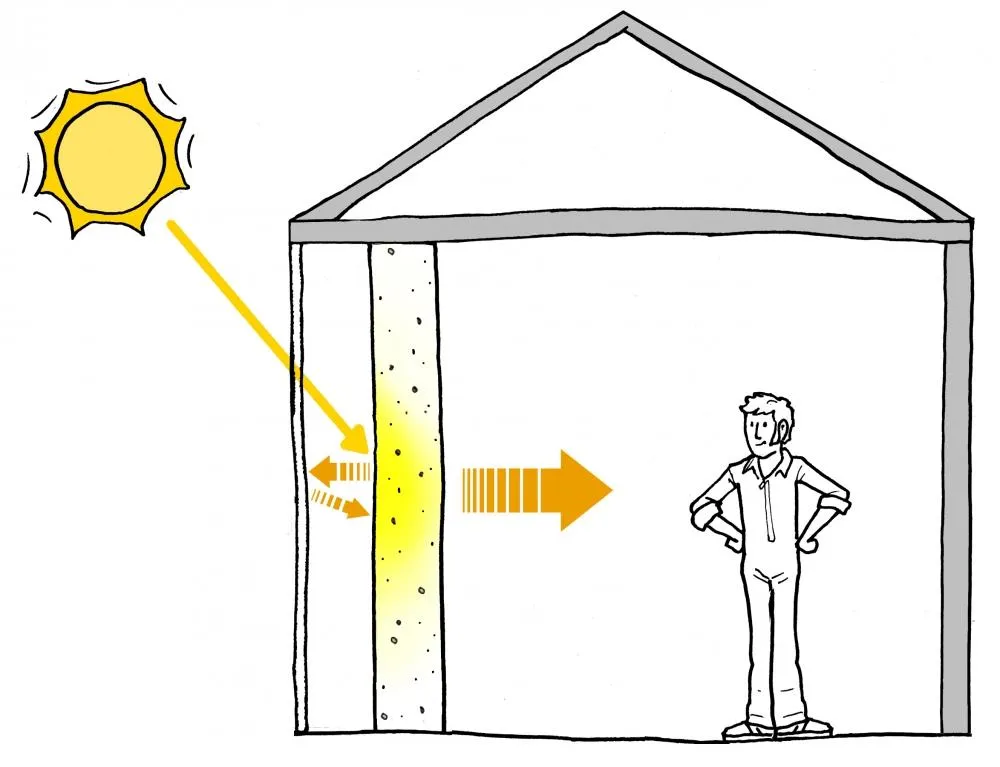
- It consists of a dark colored wall of high thermal mass facing the sun, with glazing spaced in front to leave a small air space. The glazing traps solar radiation like a small green house.
Roof pond

- In this, instead of using masonry, water can be used as the thermal mass.
- Heat is transferred through water wall is much quicker than a masonry wall.
ii) Isolated heat gain
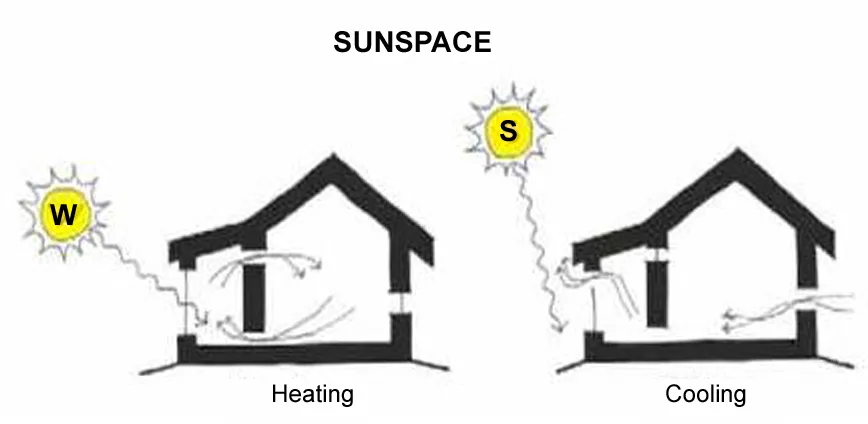
- In this the solar radiation collection and storage are thermally isolated from the living spaces of the building.
- This results in a greater flexibility in the design and operation of the passive concept.
- The method of distribution of heat from the storage can either be by radiation or convection, or it can be directly from the collector.
3) Passive daylighting
- Passive day lighting is a building design approach that focuses on gaining adequate amount of light from sun and avoiding glare in a building in order to improve the indoor visual comfort with low or no energy consumption.
This approach works either:
i) By letting in the maximum amount of light directly from sun and,
ii) By restricting the amount of glare getting inside the room.
Passive day light systems
- These systems help in gaining the maximum amount of daylight from the sun, avoiding excessive glare to avoid visual discomfort inside the room. Implementation of these systems in buildings reduces the electricity loads for lighting purposes.
i) Indirect light
Light shelves
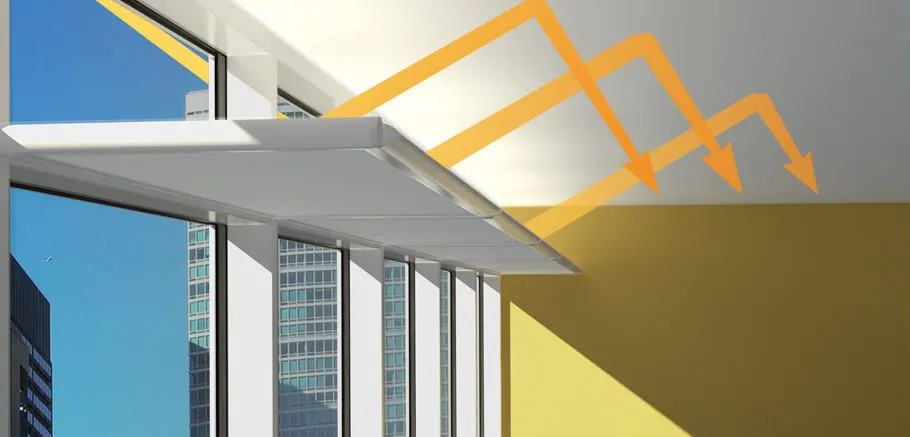
- Light shelf is a horizontal surface that reflects day light deep into a building.
- Light shelves are placed above eye-level and have high-reflectance upper surfaces, which reflect day light on to the ceiling and deeper into the space.
Sun tubes
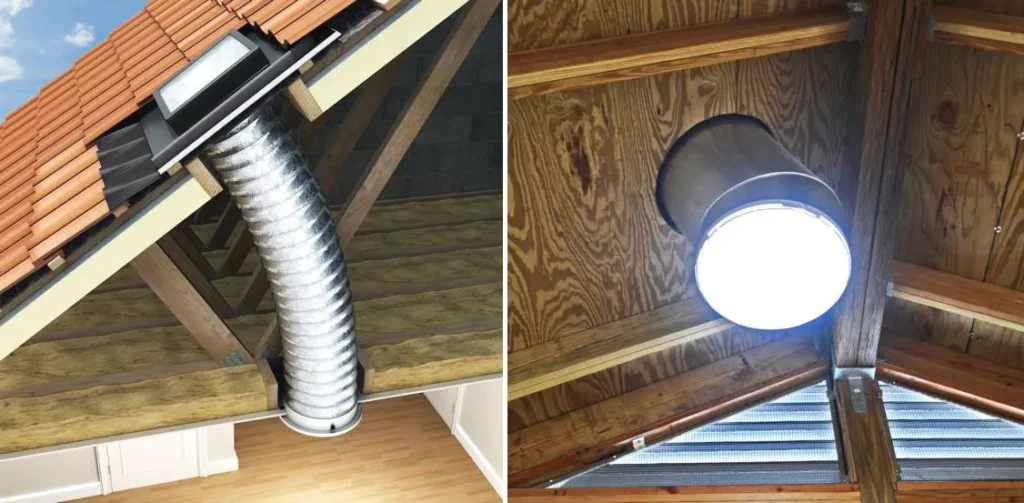
- Sun tubes are specially designed shafts that lets the light inside any space passing from roof to ceiling. The internal surface of the tunnel is a reflective material that can easily transmit the light inside the room.
These are just a few examples of the types of passive techniques used in security and risk management. The specific techniques and methods used will depend on the nature of the organization, the level of risk, and the assets being protected.